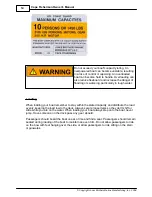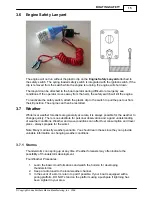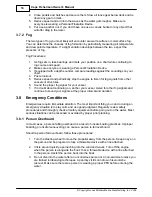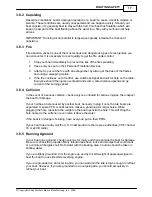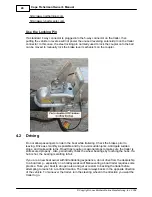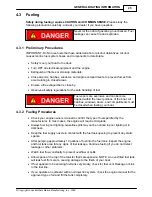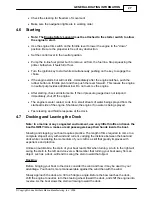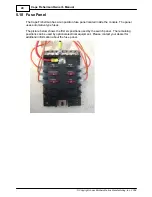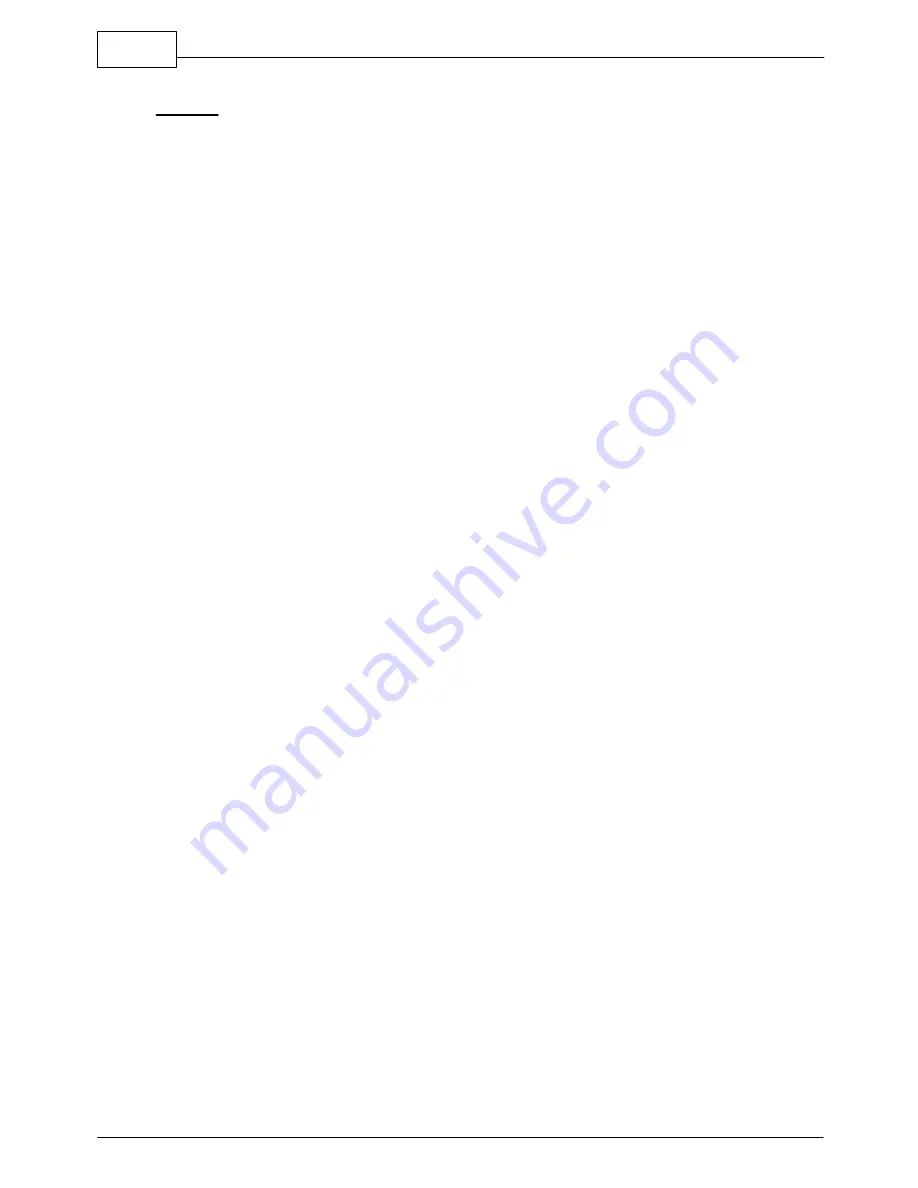
Cape Fisherman Owner's Manual
28
© Copyright Jones Brothers Marine Manufacturing, Inc. 2008
Leaving
When pulling away from the dock, push the stern clear of the dock to make sure you have
enough room to maneuver. You can get underway without bumping the stern against the
dock. Care should be taken when fending off with your arms and legs; they could become
crushed between the boat and the dock.
4.8
General Information on Boat Handling
The best method of learning how to handle your Cape Fisherman is to practice and
experiment. Even experienced boat owners need to learn a new boat's characteristics.
Practice and experiment away from congested areas. For slow speed maneuvers, find a
mooring buoy or pole to work with. Approach the object at different speeds, and work with
the wind and tide to find out how they affect your maneuvers.
Try to get a feel for the following:
·
Minimum speed for effective steering.
·
Turning radius at different speeds.
·
Response to steering at low speeds.
·
Accelerating and deceleration rates.
·
Time and distance to bring the boat to a stop at different speeds.
·
Try to get an idea of your fuel consumption at various throttle settings and load
conditions. The engine owner's manual will have guidelines, but you should develop a
feel for your fuel usage. Never completely trust your gas gauge!
4.9
Towing or Being Towed
In the event of a mishap or power loss, you may need to tow a boat or be towed. You
should not tow a boat larger than your own. Never tow a boat if you are not equipped with
the proper lines. Nylon ropes are recommended due to the strength and elasticity they
provide to absorb the shock of towing that may occur. Passengers should never grasp a
towline, it should be secured to the boat.
Before towing a boat, make a bridle and tie it securely to the pad eyes on the transom with
enough slack to clear the engine and stern drive. Attach a tow line to the bridle so that it
may slide from side to side, to prevent too much pressure on a single pad eye. The tow line
should then be attached to the bow eye or a bridle on the towed boat. The tow line should
be a minimum of twice the length of the towing boat, the longer the better.
When passing a towline to the other boat, do not try to run in too close. Send a light line or
attach the towline to a life preserver to be collected. Be careful of the other boat's propeller.
Note: If the situation on the water requires an immediate tow and you do not have
time to make a bridle, loop the tow rope three times through a pad eye on the
transom. Then use the closest cleat on the stern to attach the line. Pad the line with
Summary of Contents for Cape Fisherman
Page 1: ...Cape Fisherman Owner s Manual...
Page 6: ......
Page 7: ...WELCOME Part I...
Page 9: ...OVERVIEW Part II...
Page 12: ......
Page 13: ...BOATING SAFETY Part III...
Page 26: ......
Page 27: ...GENERAL BOATING INFORMATION Part IV...
Page 37: ...OPERATION Part V...
Page 55: ...MAINTENANCE AND SERVICE Part VI...

